Every householder experienced hard times getting rid of wasps in the house or outside. It is unbelievable that these insects appear in your life every spring and summer season.
I’ve tried plenty of wasp control products, including natural and non-chemical sprays and wasp traps. I have tried plenty of methods on how to deal with wasps and discovered 6 TOP insect killers that will help you get rid of wasps outside and inside your house.
Besides, I have examined questions about how to distinguish different types of wasps and how to prevent their return to old nests. Take a look at my detailed guide on wasps and make a deliberate choice of the best killers to destroy these buzzing insects.
Wasps Identification
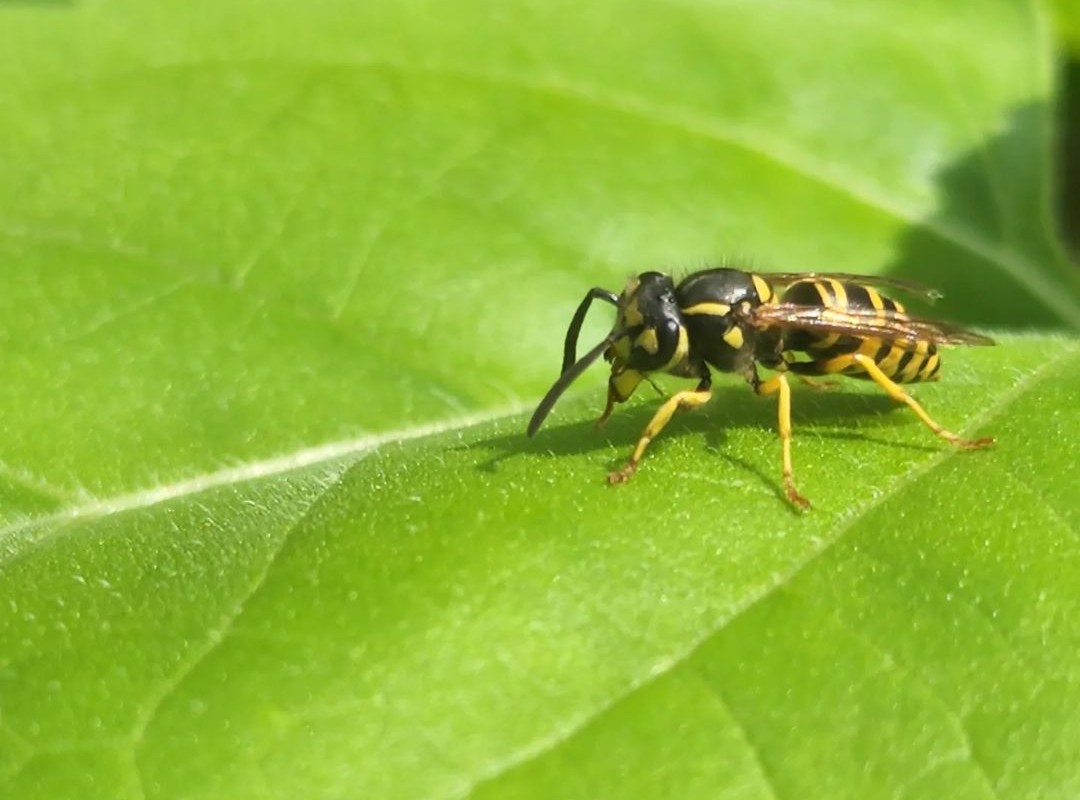
Probably, you are aware of the appearance of a classic wasp – it is an insect with black and yellow stripes. The length of the body of a wasp can range from 0.6 to 4 inches. There are wasps with four webbed wings as well as there exist wingless wasps.
The belly resembles a spindle or barrel covered with hairs. A narrow waist divides the body and makes it possible to bite the victim at any angle. Wasp venom comes out of the sting at the end of the abdomen.
Wasps Lifecycle
The wasps live two lives, I’d even say. The paradox is that the life cycle of wasps is pretty similar to how bees live. The only difference is about the female wasp. It lives alone in the winter period, then she creates the whole family again.
Thus, the lifespan of sexually mature individuals, which are the main subjects of the life cycle, is about four years. This is at maximum luckiness of the uterus of the wasps family. Most males die after base pairing, so their life expectancy is even shorter than of working females.
Common Species
All kinds of wasps belong to different pest insect families. The 3 most common species among them are paper wasps, yellowjackets, and hornets.
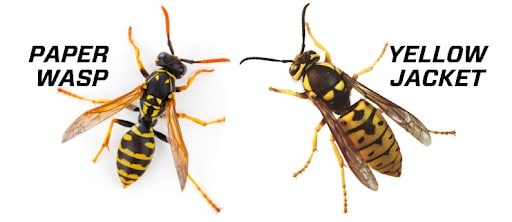
Paper wasps are commonly known insects with black and yellow stripes. Their round nests can often be seen on the walls of houses, or in the attics. Moreover, paper wasps build their nests in a quite interesting manner: for its construction, wasps use paper (that’s how they got the name). They produce it with wood fibers, chewing it afterward, and gluing its fibers with saliva.
The hornet is the largest of the public wasps, its dimensions reach 55 mm in length.
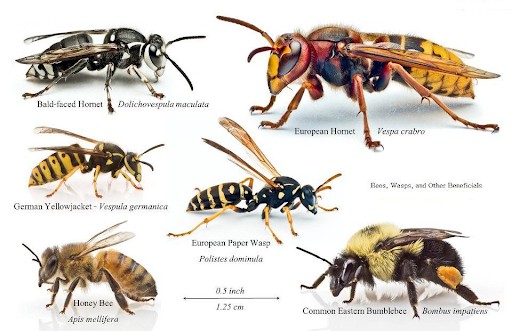
The appearance of the yellow jacket mostly resembles a bee with small body size and yellow stripes on its abdomen. However, they have neither brown hair on the body nor pollen basket on the hind legs, which is important to notice in order to identify them.
Wasps vs Bees, Yellow Jacket vs Wasp, Hornet vs Wasp – Do You Know What’s the Difference?
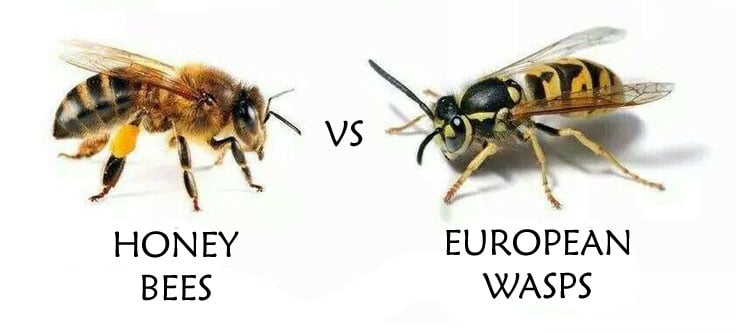
Bees and Wasps
- Externally, a wasp differs from a bee in a more slender body and a less dense hair.
- Wasps do not collect pollen and do not pollinate plants, unlike bees, the main purpose of which in nature is to pollinate flowers.
- All kinds of bees produce honey. Among wasps, only some species can do this.
- Bees can be found curling near flowers – woody or decorative, near flowering garden crops, and also near water (in villages near water tanks or water taps).
- Wasps twist most often near sweet ripe fruits on fruit trees, as well as around rotten vegetables and any products on the street. Like flies, they curl near raw meat, fish, and even rotten food waste.
Yellow Jacket vs Wasp

- Yellowjackets are limited to only two genera, while wasps generally include many genera.
- Wasps are comparatively larger than yellow jackets.
- The color of yellow jackets is very similar to bees, although not all wasps feature this color.
- Wasps are mostly parasitic, and yellow jackets are predatory.
- Yellowjackets fly quickly sideways just before landing, while not all wasps do this.
How Is a Hornet Different from a Wasp?
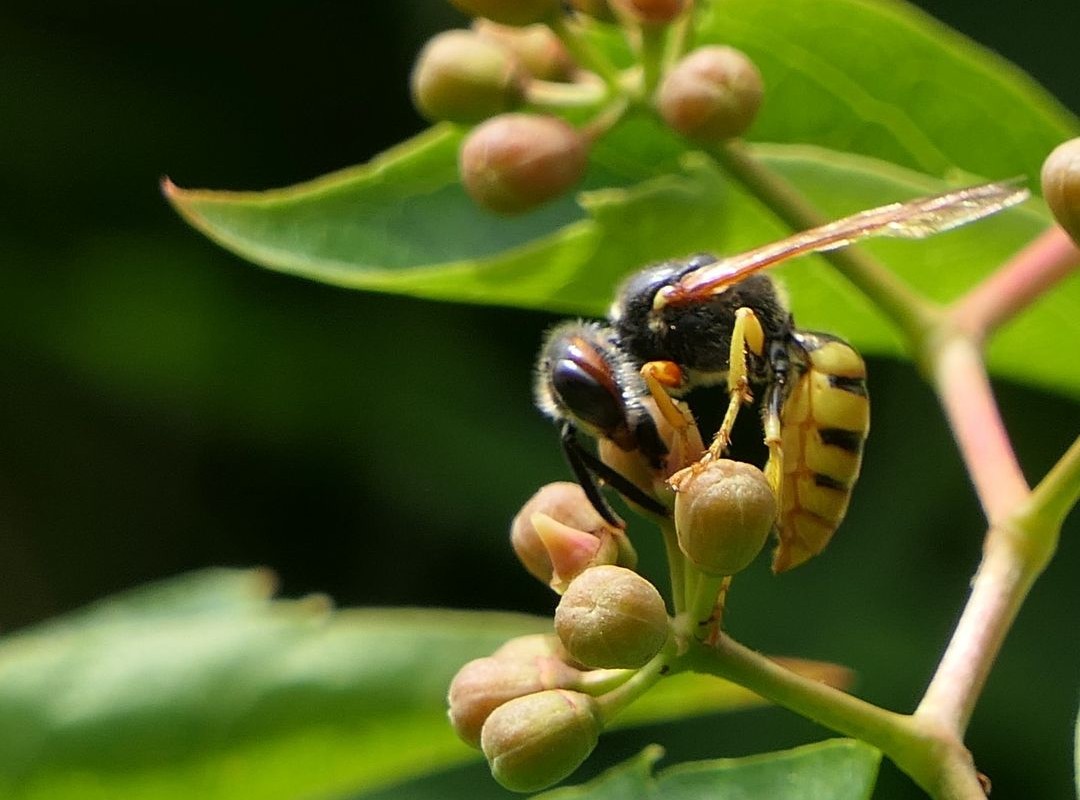
A hornet is larger than a wasp by its body size – the length of the hornets’ body can be more than five centimeters.
Hornets and wasps use different material to build a nest:
- The wasp uses thin fibers of trees to build the nests. In appearance, the nest resembles a round bundle of paper with numerous parallel layers, the honeycombs of which are located on the underside of the layer. The hornets use the same method of construction, but the material for use is from rotted fibers of trees and stumps.
- The hornet’s bite is very painful, with the release of a strong concentration of paralytic poison. They attack a person only in case of danger to their life. A wasp refers to the insect with aggressive behavior. Its characteristic features are importunity and the ability to sting at any time. In this case, a wasp does not die.
Potential Wasps Dangers
A black wasp in the house is highly active in the summer months and in early September. The poison contained in the sting and the oral apparatus may cause a danger to humans. If this wasp stings several times, the concentration of histamine will be very high.
If a person is often attacked by wasps, they run the risk of getting a severe allergy with every bite. The reaction of the body and its severity varies depending on the concentration of the poison, the number of bites applied, and the tendency to allergies.
The most common consequences after wasps stings are:
- Acute and sharp pain (it resembles a burn), which increases in several seconds after the attack;
- The appearance of redness around the site of the bite;
- A stung place swells strongly around;
- Along with the pain, itching appears and increases, but this reaction remains longer than the pain.
Wasp Signs and How to Inspect the Property for Them
Although the habitats of wasps depend on belonging to a certain species, they still have a general preference to settle closer to a person, since we are a constant source of food.
Because of this, the first step to inspect the territory for them is to build paper nests (the material for which is produced independently from wood and their own saliva, so the need of wood is also important) right before your eyes: in the garden, on the roof, or porch.
You can put any possible sweet foods left inside it such as honey products, jam, fruit leftovers, and so on. Wasps will smell them if they are on your territory, and you’ll notice whether they live in your household or not. However, some wasps build a nest for themselves from tiny stones, fastening them with mud, or from clay.
How to Get Rid of Wasps: a Step-by-Step Guide
Step 1: Prepare Yourself for Safety
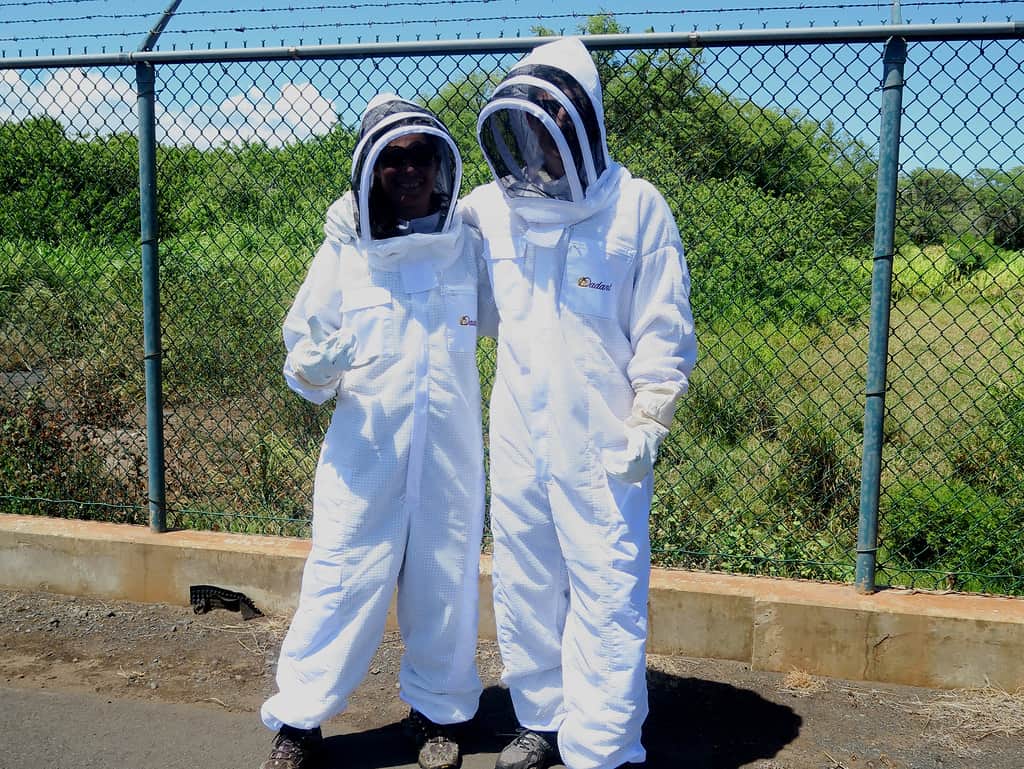
Any garden work requires compliance with personal safety, and the extermination of hornets and wasps nests is not the exception. It is necessary to remember several basic rules that will help in the fight against wasps:
- It is better to fight these insects late in the evening when they are already “sleeping”.
- You cannot use lanterns – the insects can perceive the light from the searchlights as sunlight and start their hunt ahead of time.
- Prepare tight ammunition consisting of a canvas suit, rubber boots, glasses, rubberized gloves, and a hat.
- Use paralyzing smoke, and wasps will lose mobility. Then you can safely eliminate the nest itself.
- Think of escape routes. Wasps are unpredictable creatures, and when the whole family understands the reason for the invasion, it will not be possible to leave the territory painlessly.
- Prepare the anti-allergic medications recommended by your doctor for a wasp sting. Even if there is no allergy, drugs may come in handy.
- Familiarize yourself with traditional methods for the pain relief of wasp stings – this may turn out to be timely and necessary help.
By using adequate ways to deal with wasps, you will protect yourself and your crop from these intrusive insects.
Step 2: Identify the Nests
If it is not possible to determine the presence of the nest visually, and the insects are disturbing you, then it is worth leaving fruit or pieces of meat in a visible place. By observing where wasps take their booty, you will most likely be able to determine the place of their permanent location.
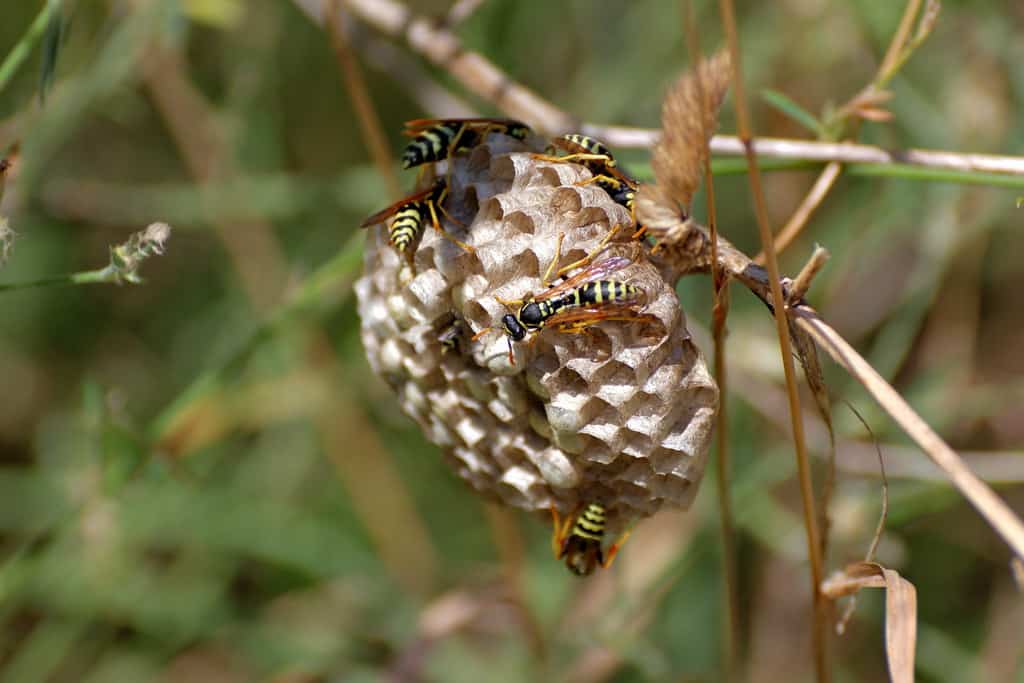
The size of the constructed nest can range from the diameter of a tennis ball to a basketball one, and in some cases – even more. Regardless of the location, the nests are built in the form of a horizontal structure, the cells of which are facing down with their entrances.
Trying to get rid of a wasp nest, you don’t have to stand directly under it, otherwise, an angry swarm of wasps will attack its offender immediately.
Step 3: Identify the Species
As I have mentioned earlier, these insects are representatives of the Hymenoptera species. It is enough to look at an ordinary domestic (public) wasp to see that between the belly and the wasps’ chest there is a narrow section.
This unique anatomical feature of wasps allows them to fold their own body almost in half; also, it enables the process of attacking the victim from any convenient angle. The body of adults protects a strong chitinous cover. The head remains very mobile. The color of the wasps is striking in its diversity: some individuals are found with both richly black, turquoise, or purple colors.
Step 4: Get Rid of Wasps
Once you have identified the pests nest, the most important stage is ahead – getting rid of the unwanted wasps. You should not delay and postpone the procedure of the destruction of wasps because they breed quickly. There are a few most common methods of how to kill wasps:
Burn the Nest
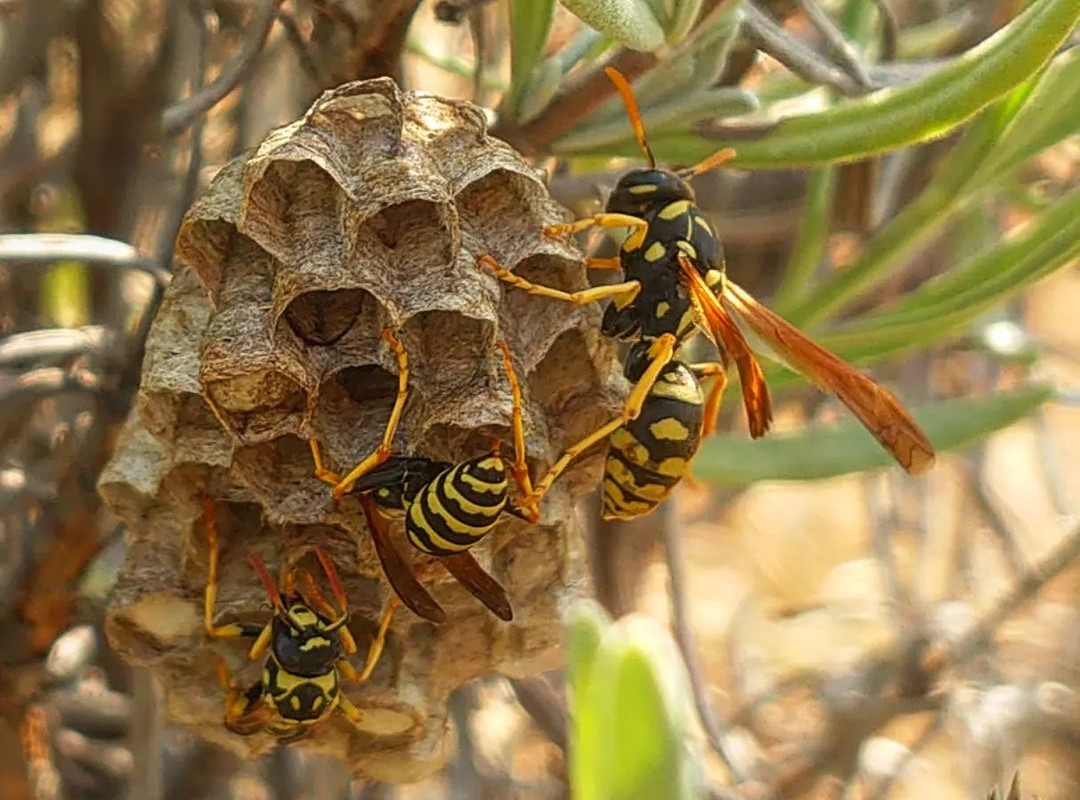
The wasp’s nest is built of chewed wood bark. It looks like cardboard in its qualities and structure and burns down in just a few seconds. To do this, you need to take gasoline, pour an object over it, and bring the fire. This method is simple but dangerous, it can ignite the building and result in the fire.
Do not use the fire if the nest is located on a ceiling sheathed in wood, or under easily ignited material. It is advisable to burn wasps on a stone wall, in an earthen hole, or in large industrial warehouses. This method is not suitable for ground wasp removal.
Insecticides for Wasp Control:
- Gels. Often, gels can be used to kill cockroaches and exterminate wasps.
- Powders. Insecticide wasp powders are some of the most effective remedies. Sometimes they are used as bait – in the case with wasps, the powder is mixed with a treat for insects (boric acid is also suitable for this).
- Concentrates. You have to dilute them and pour into a spray bottle to use in a proper way. Such tools are inexpensive but very effective.
- Aerosols. You don’t have to ask what kills wasps anymore because ready-to-use wasp aerosols will instantly solve your problem with these annoying insects. In this case, you will need to buy a bottle with a sprayer and eliminate wasps’ nests with it. I consider this method as the best way to get rid of wasps because they act instantly and safely for human and pet health.
- Bait for wasps. Their action is based on the taste preferences of the wasp. The insecticide for wasp control has to be mixed with jam or syrup.
Traps
Traps are effective, they are the same as baits but work without poison. As soon as wasps get inside a trap, they cannot leave it and die inside from the dehydration. They are sold in specialized stores, online stores, and you can make them yourself. This is considered as one of the natural ways to get rid of wasps.
To do this, follow the instructions:
- Take a bottle of plastic and unscrew the lid;
- Cut off about a third from the top;
- Pour the bait inside and close with the lid.
You can place a homemade trap anywhere outside or under the roof of the house. Wasps that are caught inside will not be able to find a way out and will die eventually.
Best Wasps Control Remedies
In this section, I want to present my TOP 6 wasps treatment collection. I have studied each of the items in detail to understand which products are better to use for different purposes.
1. AIRCROW: Best Fake Nest Wasp Deterrent
[amazon box=”B01KLMDXKK” template=”vertical” tracking_id=”how-to-get-rid-of-wasps-20″ button_text=”Check price on Amazon”]
Specifications:
- Without toxic chemicals
- Material: Durable Foam
- Item Weight: 2.39 ounces
- Product Dimensions LxWxH: 7 x 8.5 x 1 inches
- Target Species: Wasps
This fake nest is a bit different from other usual wasps deterrents. It looks highly authentic as compared to the natural wasp’s nest. The main benefit of such repellent is it’s natural and non-toxic materials which makes it safe for use both indoors and outdoors.
AIRCROW doesn’t require killing wasps, and it is great for the environment. You may use this deterrent for many years because it doesn’t have the expiration date. Moreover, due to the water-resistance of the material, it’s almost impossible to damage the AIRCROW.
| Pros: | Cons: |
|
|
2. Tempo Dust: Best Wasp Powder
[amazon box=”B004H4CC7Y” template=”vertical” tracking_id=”how-to-get-rid-of-wasps-20″ button_text=”Check price on Amazon”]
The insecticidal dust comes in a ready-to-use formulation which consists of a very dry inert carrier. It kills not only wasps but other crawling insects such as bed bugs, ants, roaches, and fleas. It is useful to use for cracks and crevices, wall voids, and spot treatments.
Tempo Dust is designed especially for places that are difficult to reach. The wasp’s powder has longer residual action which helps to eliminate wasps constantly till they all are gone from your household. This wasps killer is safe to use even near the electrical outlets because it doesn’t include any moisture.
| Pros: | Cons: |
|
|
3. BASF Wasp Freeze: Best Wasp Spray
[amazon box=”B0001LE2D4″ template=”vertical” tracking_id=”how-to-get-rid-of-wasps-20″ button_text=”Check price on Amazon” button_detail=”https://shareasale.com/r.cfm?b=410159&u=2583381&m=43235&urllink=www%2Edomyown%2Ecom%2Fwasp%2Dand%2Dhornet%2Dcontrol%2Dkit%2Dp%2D14735%2Ehtml&afftrack=how%20to%20get%20rid%20of%20wasps” button_detail_text=”Check price on DoMyOwn”]
Specifications:
- Active Ingredient: Prallethrin 0.1%
- Item Form: Aerosol
- Item Weight: 1.09 Pounds
- Item Dimensions LxWxH: 2.63 x 2.63 x 11 inches
- Target Species: Wasps, Hornets, Yellow Jackets, Spiders
You may wonder if it’s possible to kill the wasps and other insects instantly. In this case, Wasp Freezer will help you to deal with this issue. This is an outdoor use spray that knockdowns wasps on a distance up to 15 feet away.
It means that BASF company wasp treatment spray is safe for use, and the killing action is so quick that the insects don’t have enough time to release the stinging pheromone. The residual action helps to eliminate the whole nest. Even in case some of the wasps are not in the nest when you spray it, they will die as soon as they return.
| Pros: | Cons: |
|
|
4. Demon Max: Pro Insecticide
[amazon box=”B00555SR9Q” template=”vertical” tracking_id=”how-to-get-rid-of-wasps-20″ button_text=”Check price on Amazon” button_detail=”https://shareasale.com/r.cfm?b=410159&u=2583381&m=43235&urllink=www%2Edomyown%2Ecom%2Fdemon%2Dmax%2Dp%2D3553%2Ehtml&afftrack=how%20to%20get%20rid%20of%20wasps” button_detail_text=”Check price on DoMyOwn”]
Specifications:
- Active Ingredient: Cypermethrin 25.3%
- Item Volume: 16 fl. oz.
- Item Weight: 1 pounds
- Item Dimensions LxWxH: 2.05 x 4.35 x 8 inches
- Target Species: Ants, Ant Mounds, Asian Cockroaches, Bark Beetles, Bees, Borers, Boxelder Bugs, Carpenter Ants, Carpenter Bees, Centipedes, Chiggers, Chinch Bugs, Cockroaches, Crickets, Earwigs, Elm Leaf Beetles, Fire Ants, Firebrats, Fleas, Flies, Ground Beetles, Gypsy Moths, Millipedes, Mole Crickets, Mosquitoes, Pillbugs, Scorpions, Silverfish, Sowbugs, Spiders, Ticks, Wasps, Wood Infesting Beetles, and others
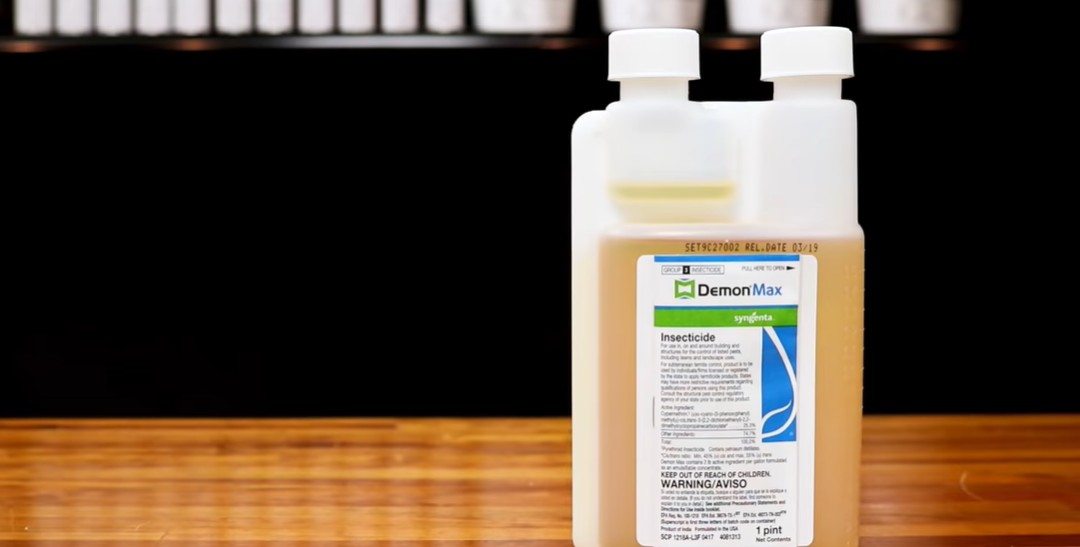
Demon Max is the perfect product to use indoor and outdoor. It is a multipurpose treatment for wasp, termite, and general professional pests control. Because it may be used to kill different insects and mosquitoes, you have a chance to cope with all the pests in your household at once.
The package is equipped with a special measurement reservoir that helps to control the amount of the insecticide that you have to apply. It is very convenient because, sometimes, people may over-apply the treatment, which may harm their health. The instructions on the bottle describe in detail how to get rid of wasps quicker with Demon Max.
| Pros: | Cons: |
|
|
5. RESCUE!: Best Wasp Trap
[amazon box=”B00004TBKI” template=”vertical” tracking_id=”how-to-get-rid-of-wasps-20″ button_text=”Check price on Amazon” button_detail=”https://shareasale.com/r.cfm?b=410159&u=2583381&m=43235&urllink=www%2Edomyown%2Ecom%2Frescue%2Dreusable%2Dyellowjacket%2Dtrap%2Dp%2D20525%2Ehtml&afftrack=how%20to%20get%20rid%20of%20wasps” button_detail_text=”Check price on DoMyOwn”]
Specifications:
- Material: Plastic
- Item Form: Trap
- Item Weight: 0.05 Pounds
- Item Dimensions LxWxH: 10 x 3.5 x 3.75 inches
- Target Species: Fly, Wasp
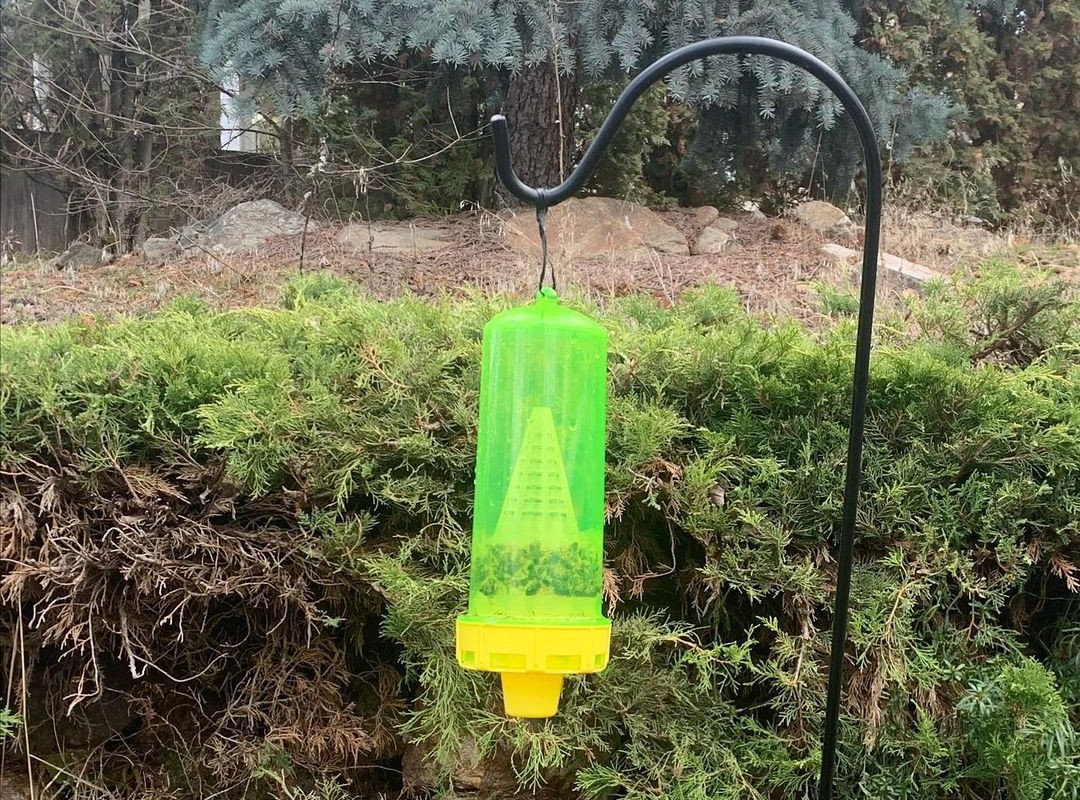
This wasp trap impresses by its innovative approach to killing wasps. RESCUE! has a non-toxic attractant that catches wasps and yellowjackets and kills them inside. You don’t need to spray anything because wasps will be attracted to this trap by themselves.
This trap doesn’t require daily maintenance and can be used for months. This product is safe for everyone who is around since it doesn’t consist of any chemicals. The wasps and yellowjackets die inside the trap because of the dehydration as they become trapped in the closed cylinder.
| Pros: | Cons: |
|
|
6. Wondercide: Best Natural Wasp Repellent
[amazon box=”B0764VD7ZW” template=”vertical” tracking_id=”how-to-get-rid-of-wasps-20″ button_text=”Check price on Amazon”]
Specifications:
- Active Ingredients: Cedarwood Oil (4.2%), Sodium Lauryl Sulfate (Derived from Plants) (2.2%), Peppermint Oil (1.5%), Sesame Oil (0.1%)
- Item Weight: 2.31 Pounds
- Coverage: 32 oz. bottle treats up to 400 sq.ft.
- Product Dimensions LxWxH: 11.3 x 5 x 4.37 inches
- Target Species: Flying, Crawling, Biting and Stinging Pests Including Ants, Roaches, Spiders, Flies,Fleas, Ticks, Wasps, Scorpions, Mosquitoes, Fruit Flies, Silverfish, Moths, Gnats, Carpet Beetles, Earwigs, Palmetto Bugs, Waterbugs
This wasp repellent is made for indoor use. This is especially essential for those who spend most of the time with kids and pets at home. It doesn’t consist of any harsh chemicals; therefore, Wondercide is safe for human and pets health.
This spray reduces costs for pest control services because it kills them as well as professionals. For quick and easy protection, treat common places in your home where wasps or any other insects may come from, such as baseboards, areas under sinks, around windows, and doors.
| Pros: | Cons: |
|
|
How to Prevent Wasps

In the case of the first signs of annoying buzzing wasps, it is necessary to take preventive measures immediately, without waiting until the problem grows to a significant scale.
If there are gaps in which insects can settle, they need to be repaired. Fruit trees are recommended to be planted away from home so as not to attract wasps to it. It is also important to collect rotting carrion in time as it is attracting them with a fruity smell.
Open trash bins attract wasps by leftovers inside, so don’t forget to close them. It is necessary to promptly remove food from the table, and cover the trash with a tight lid to deal with wasps eventually.
Related Post: How to Get Rid of Mud Dauber Wasps
FAQ
How to Find a Wasp Nest Outside?
Searching and checking all the corners for the wasp’s nests is a boring and long story, even if the territory of the household is small. A method for detecting a nest has long been invented, for this, you need to monitor the wasps.
The method is simple: in an open place accessible by these insects, you need to put a piece of meat, fish, and wait for the wasps to fly to it. After carefully monitoring the trajectory of the insects, it will become clear how to get rid of wasps more effectively. Follow them where they are going, and you will find their nests location, which will help you to get rid of wasps outside.
How to Get Rid of Red Wasps When You Can’t Find the Nest?
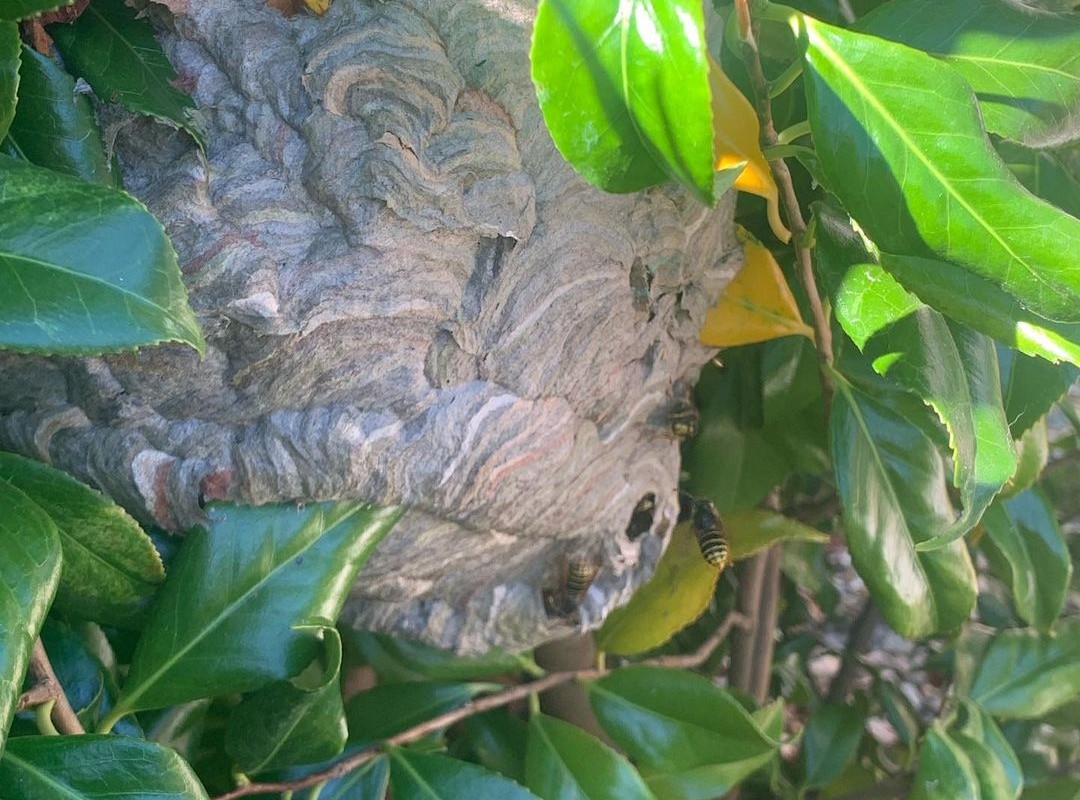
To get rid of red wasps nests is not always easy because usually, they place nests in hardly accessible to the human eye locations. Insects choose the places where it will be quite difficult to find them. In these cases, I have prepared some tips for finding pests for you:
- Prepare a piece of fish, meat, or some sweet fruit;
- Put it in a place that is constantly insight so that it is convenient to observe insects;
- Wait until the wasps find a treat and trace the trajectory of their movement;
- Insects constantly fly between the nest and the treat, so finding and getting rid of red wasps is not difficult in this way.
Do Wasps Come Back After the Nest Is Gone?
Wasps do not return to the gray nests remaining from the summer, even if they are large and multi-layered. Therefore, winter is the right time for the safe removal of wasp’s nests. Also, try to remove dry foliage, sawn trees, and decayed stumps from the site in the fall.
Remove all slate boards and pieces from the ground. Pour compost heaps thoroughly with boiling water. However, you should remember, although wasps do not return to old places, they build new ones near the previous nests.
How Far Do Wasps Travel From Their Nest?

Social wasps are “attached” to their home. Wasps fly away from it only during the day, preferring to sleep at home. It is the time that is considered the most favorable for spraying wasp nests with pesticides to kill the insects. Wasps fly out at a distance of no more than 100 meters from the home they have built. Two reasons to leave their nests are:
- Searching for food;
- The danger of the nest to be damaged.
Related Post: How to Get Rid of Cicada Killer Wasps
How to Get Rid of a Wasp Nest?
Getting rid of wasps by different methods depends on the location of the nests. If the nest is far from the house and the buildings, you can simply douse it with fuel and set on fire. Paper wasps will burn out with all the inhabitants instantly. The method of decoy wasp nest with fire is quick but dangerous.
Before applying, make sure that the fire does not pass onto dry grass or wood. When it is difficult to get to the nest and knock it down quickly, you should cover it with a dense bag with cotton wool or rags moistened with an insecticide, and keep closed. Wait until all the inhabitants die, then tear off the nest, and destroy it.

Be Sure – Now You Know Everything About Wasps
The most important thing with wasp infestation is not to forget about the precautionary measures and perform the work strictly according to the recommendations of experienced gardeners and pest control. Now you know how dangerous wasps are for people and how to distinguish them in appearance, as well as what could be the consequences of wasps poison.
But the most important thing is that you are aware of the 6 TOP products that kill wasp nests immediately. You no longer have to try hundreds of different methods and suffer from wasp stings as you already know how to safely kill a wasp.
Have you had any problems with getting rid of wasps in the house? How did you fight them? Share your experience on the most effective wasp extermination methods in the comments!
References:
- Wasps and bees (University of Minnesota Extension):
https://extension.umn.edu/insects-infest-homes/wasps-and-bees - Bees and Wasps (University of Missouri Extension):
https://extension.missouri.edu/publications/g7391 - Bees, Wasps, and Hornets (National Institute for Occupational Safety and Health):
https://www.cdc.gov/niosh/topics/insects/beeswasphornets.html - Identify the pest (Manchester City Council):
https://secure.manchester.gov.uk/info/431/pest_control/6489/identify_the_pest/6 - Wasps and hornets: information and advice (Hastings Borough Council):
https://www.hastings.gov.uk/environmentalhealth/pestcontrol/wasps/

